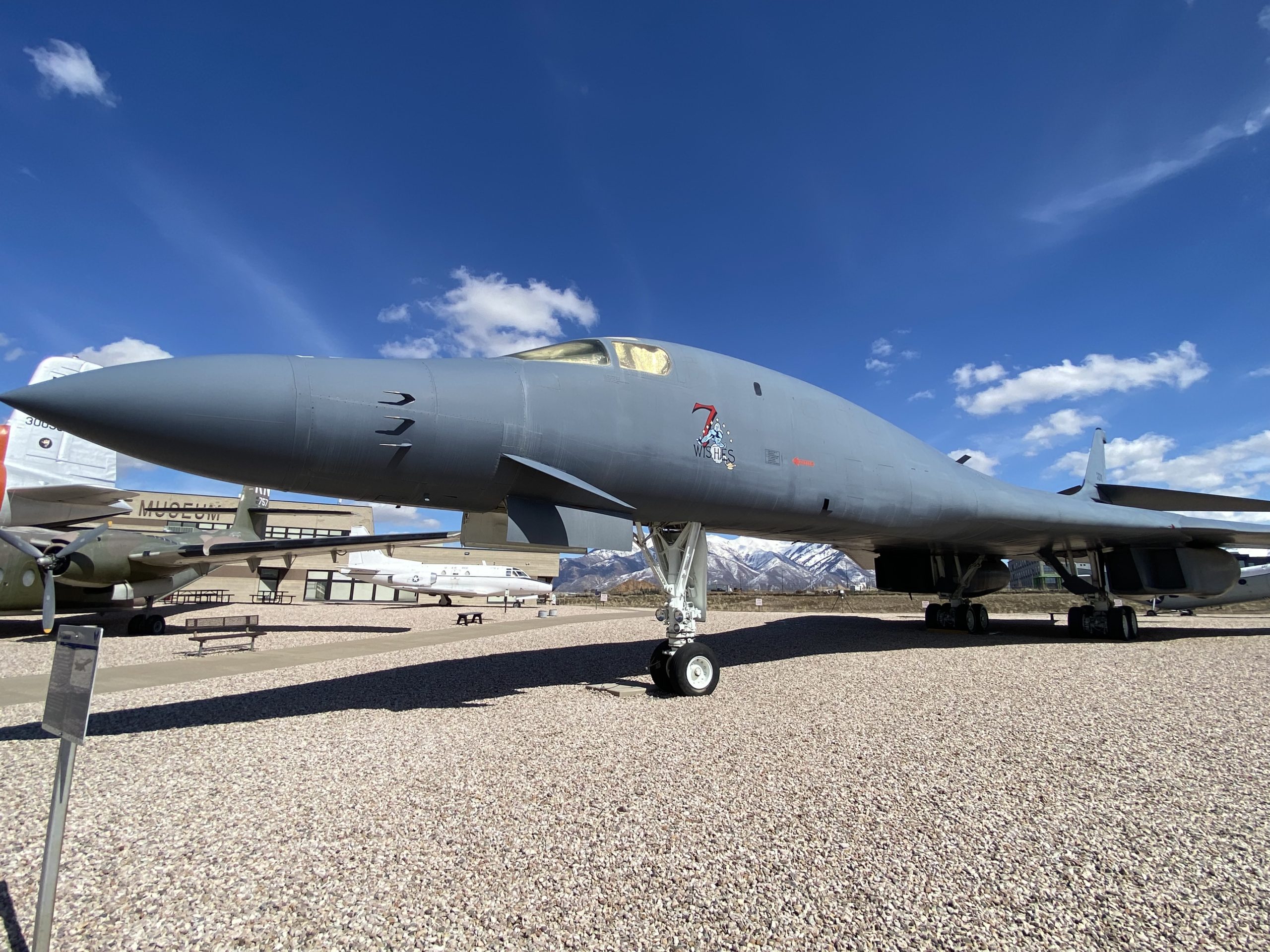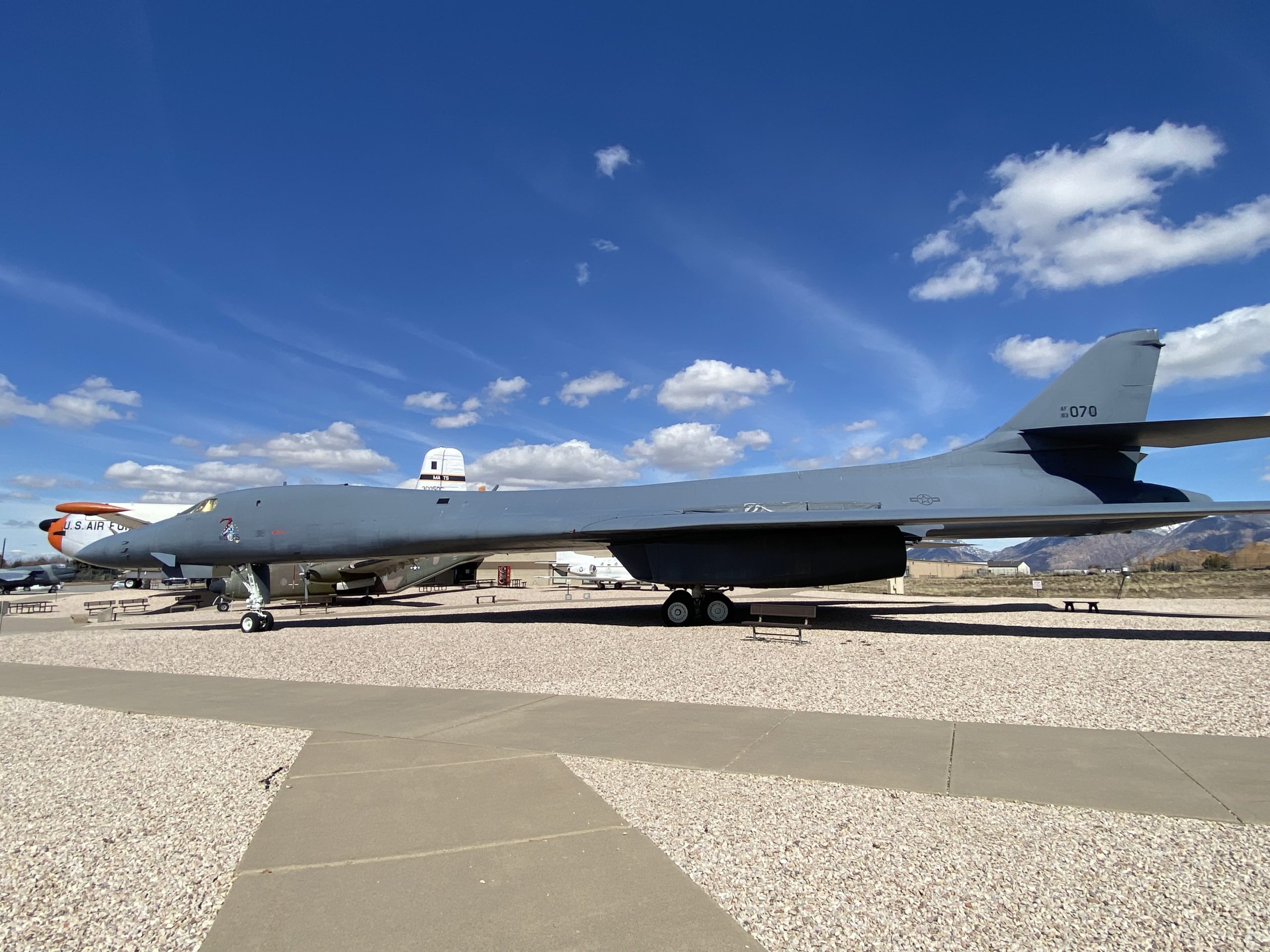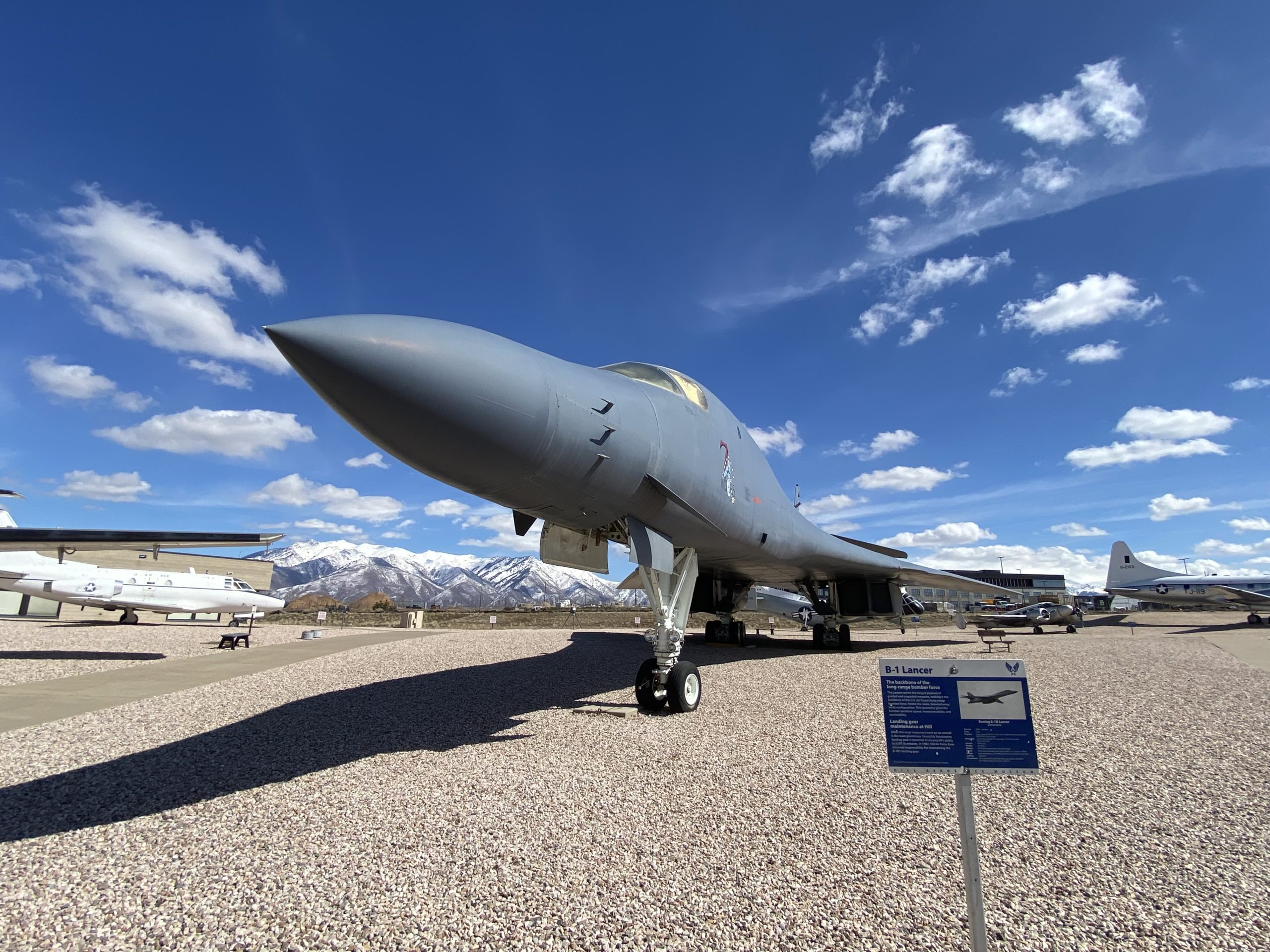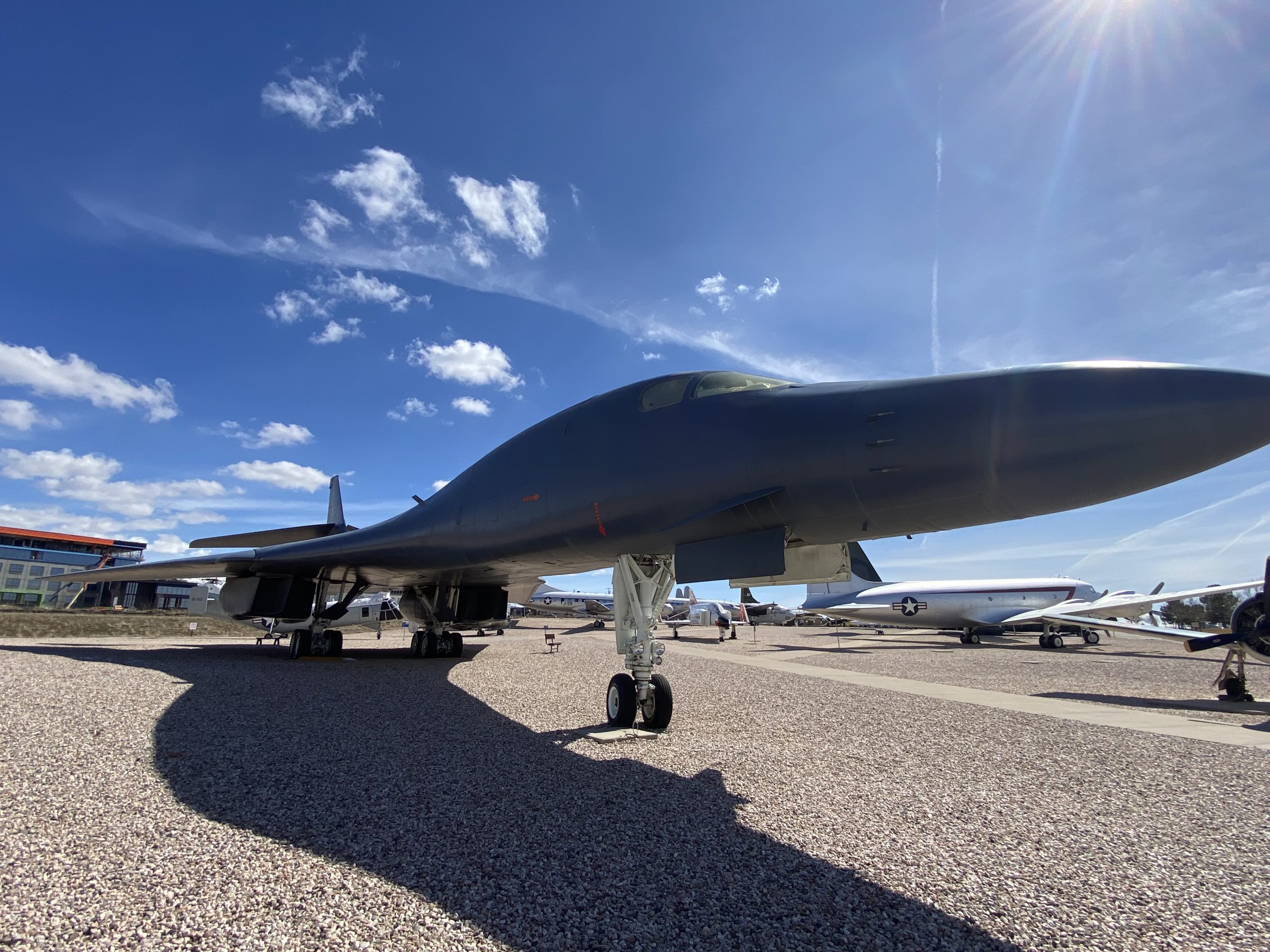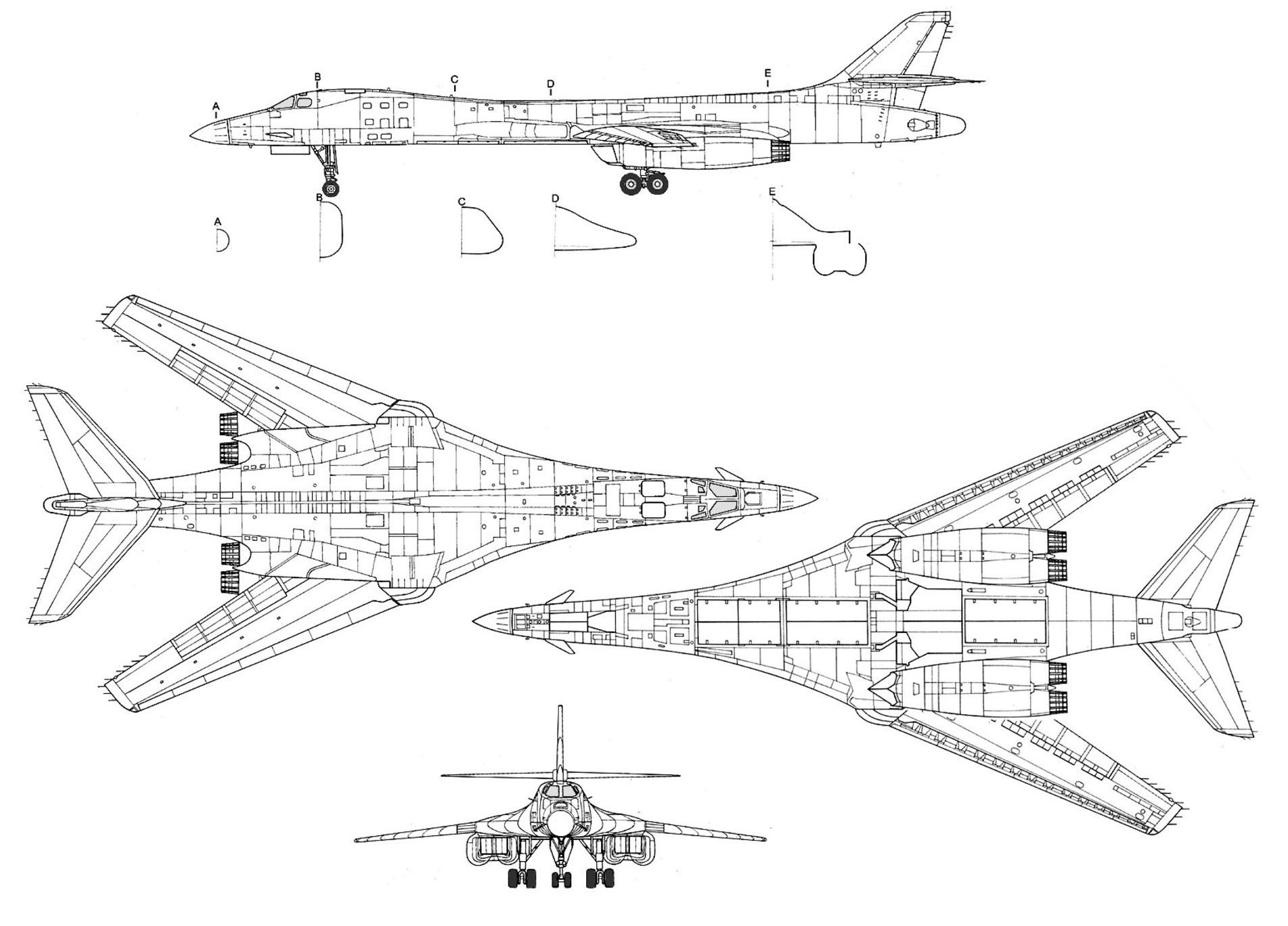
Boeing B-1B Lancer
Serial Number: 83-0070
Manufacturer: Boeing
Crew: Four
Engines: Four General Electric F101-GE-102 afterburning turbofans; 30,000 pounds thrust each
Wingspan: 137 feet fully spread (15° position); 79 feet fully swept (67.5° position)
Length: 146 feet
Height: 34 feet
Weight: 470,000 pounds maximum takeoff weight
Speed: .9 Mach (cruising); Mach 1.2 (maximum)
Range: Approximately 7,500 miles / 6,500 miles without refueling
Service Ceiling: 60,000 feet
Armament: Up to 84 Mk 82 500-pound bombs and 30 CBU-87/89/97 or a wide range of nuclear weapons
Cost: Over $200,000,000 per aircraft

